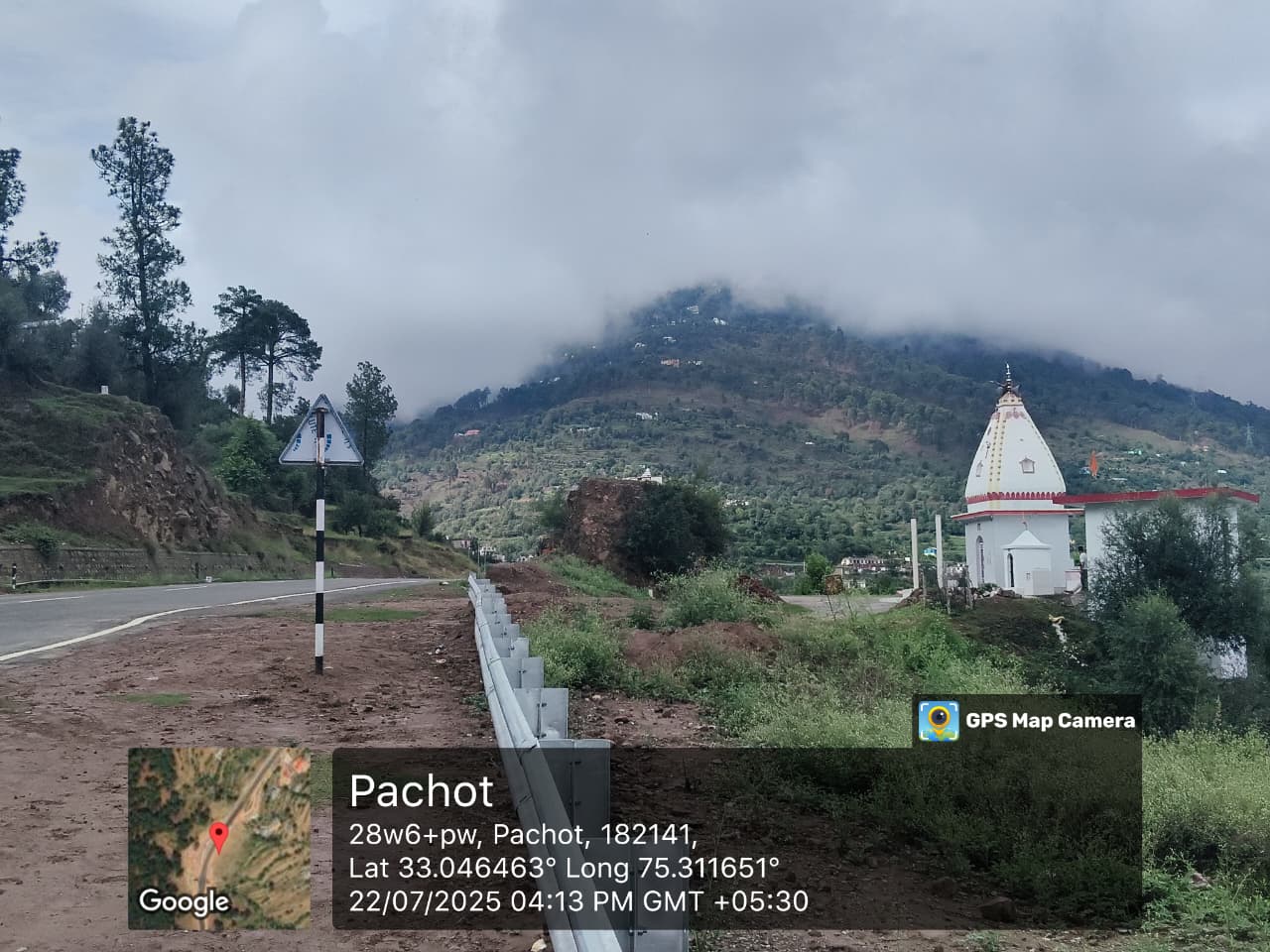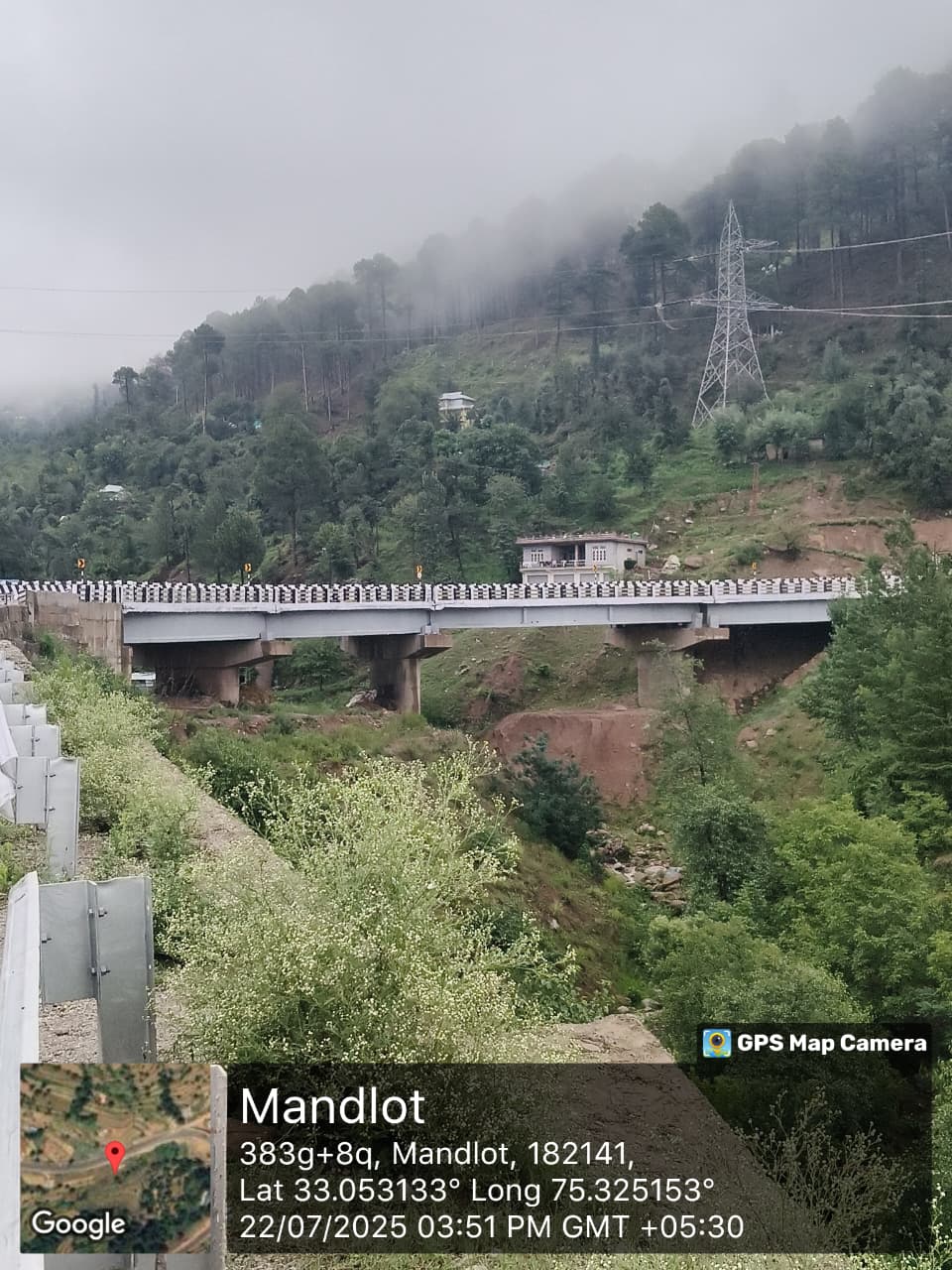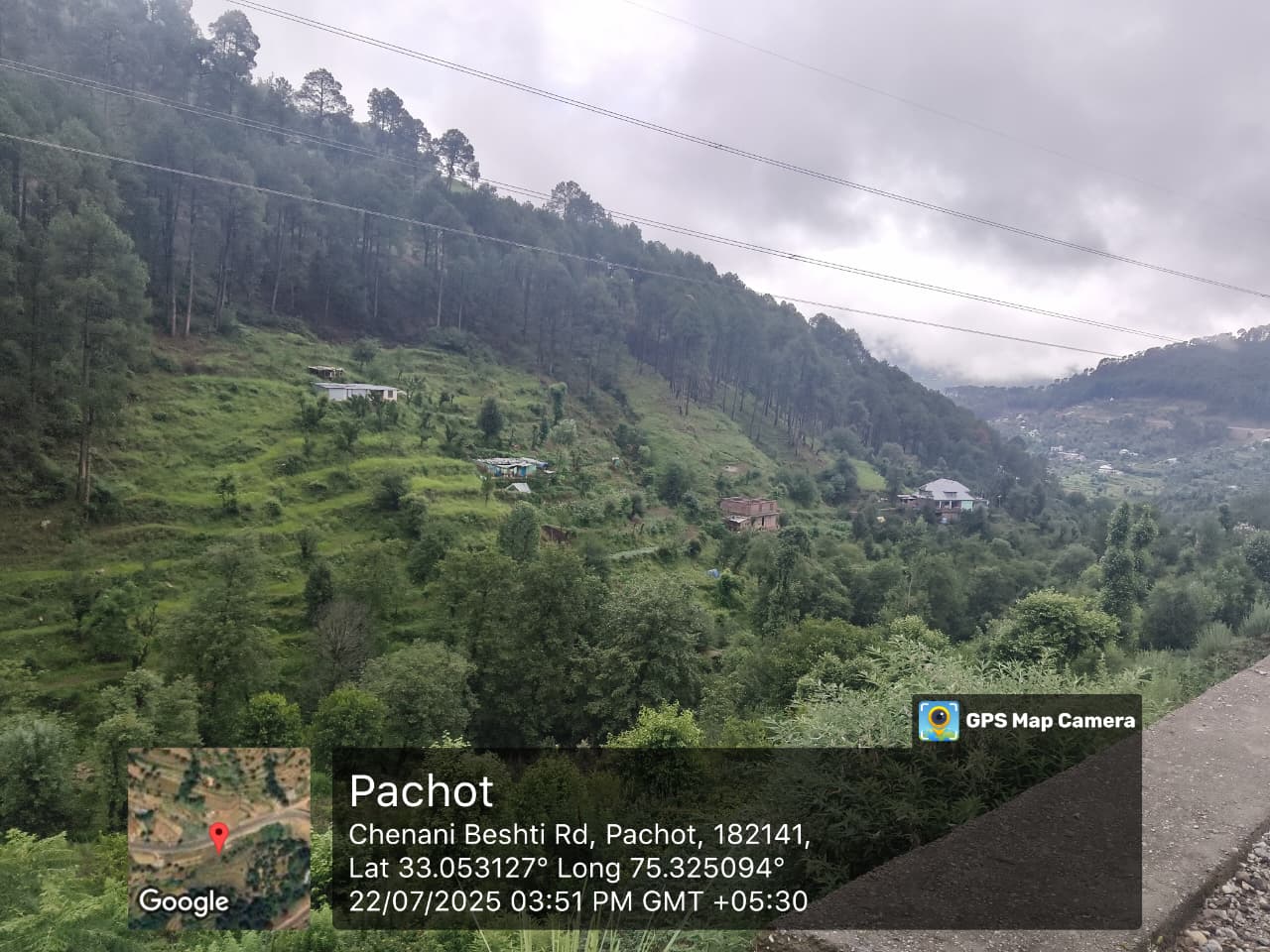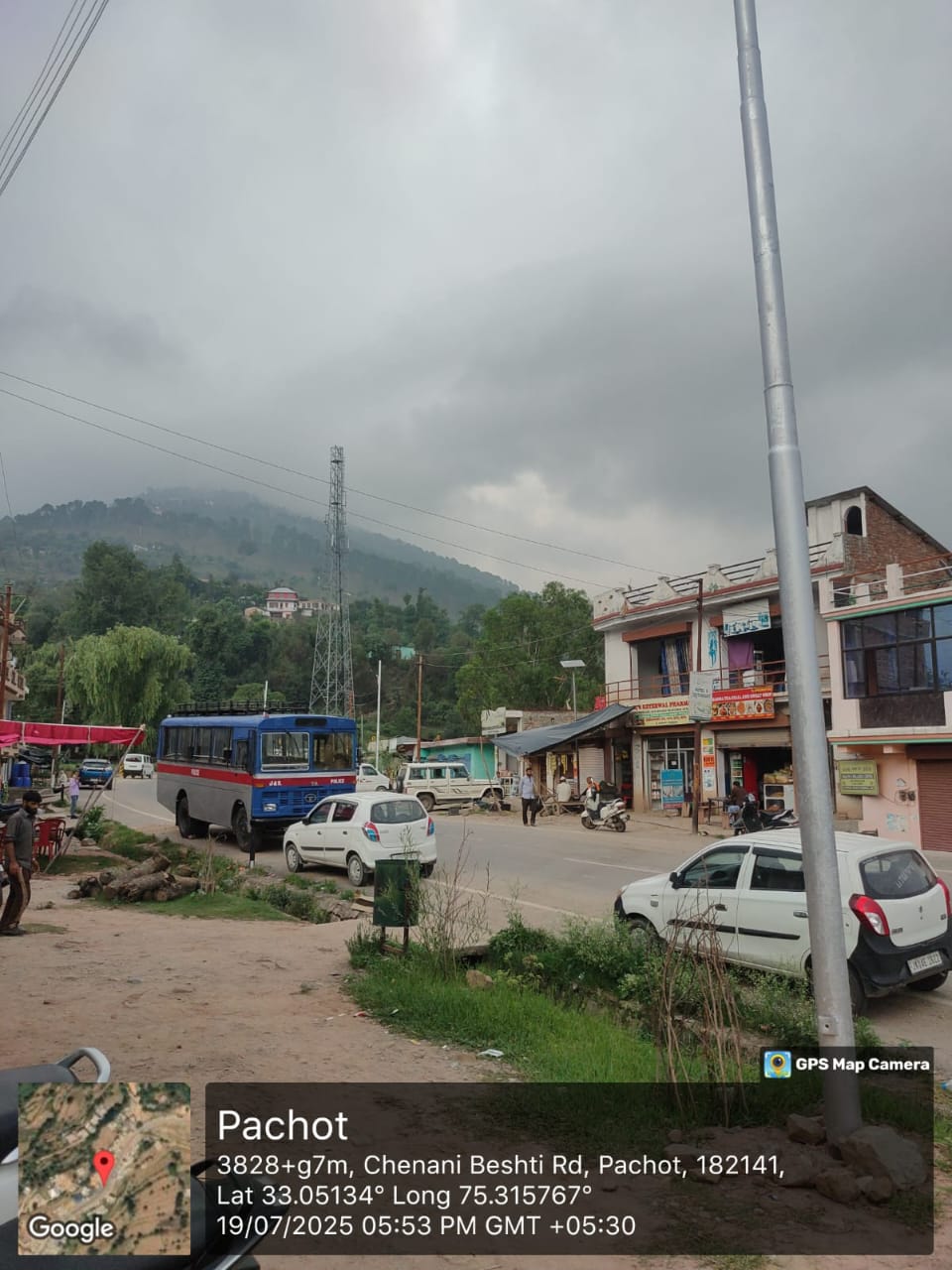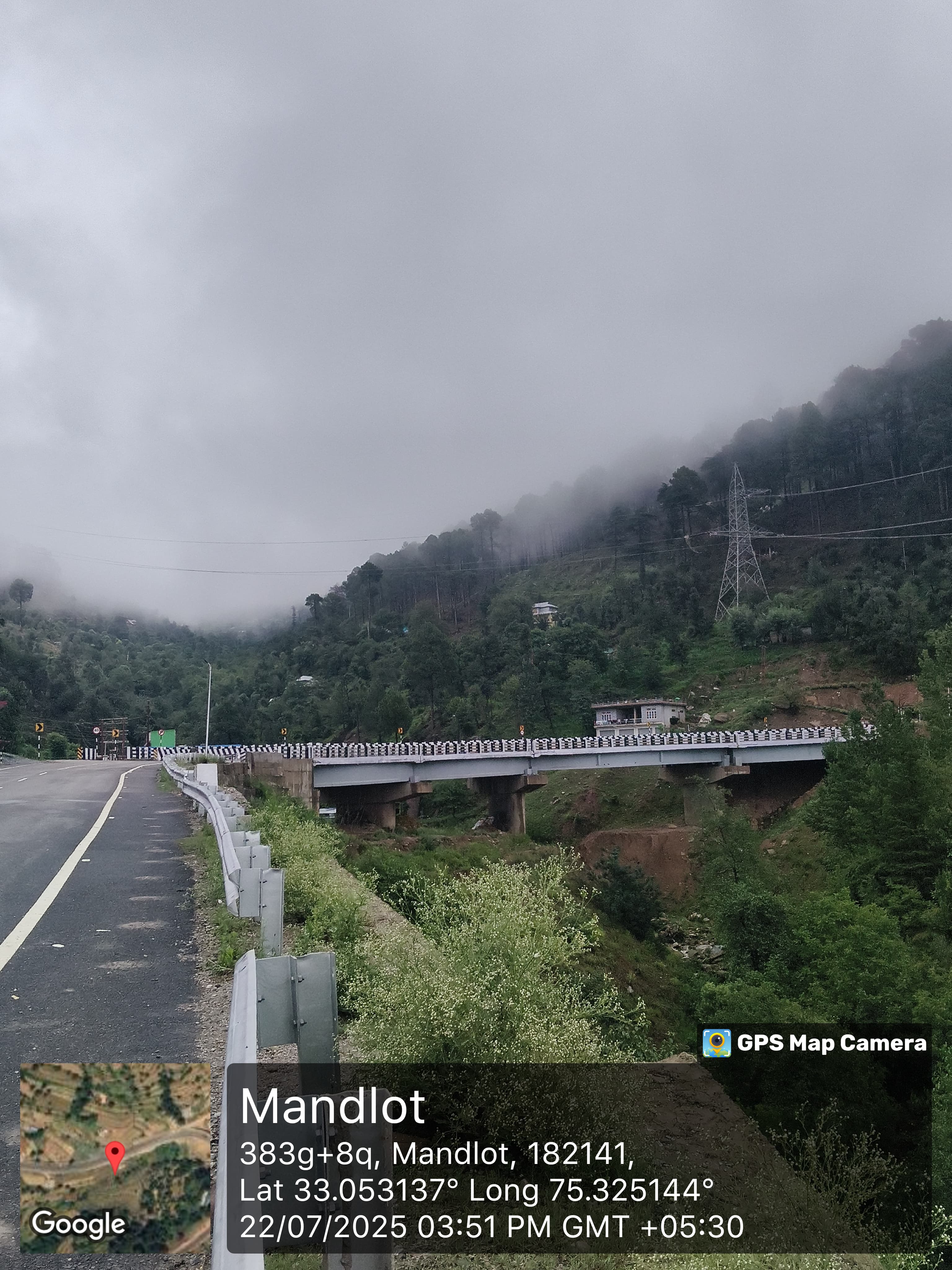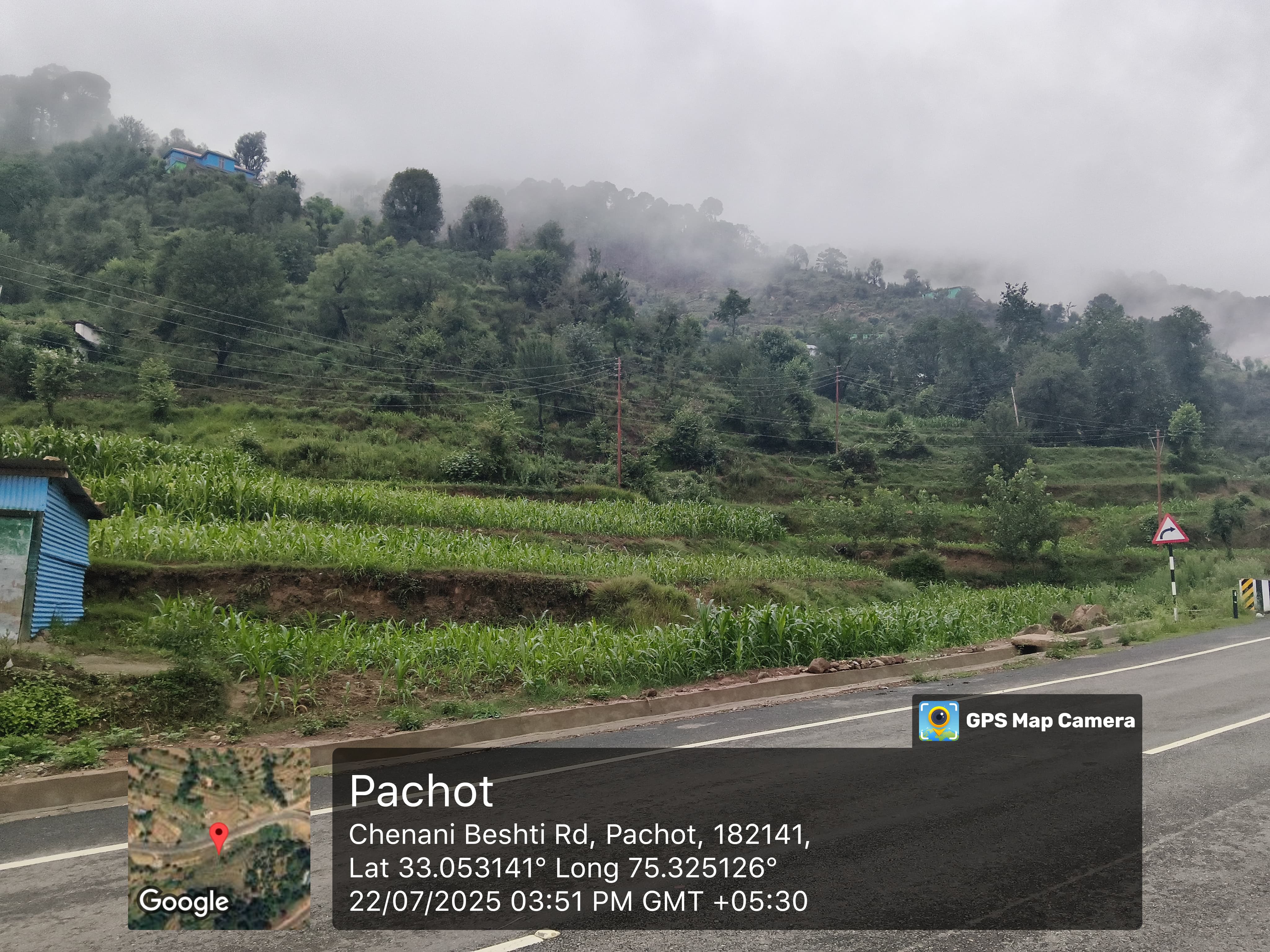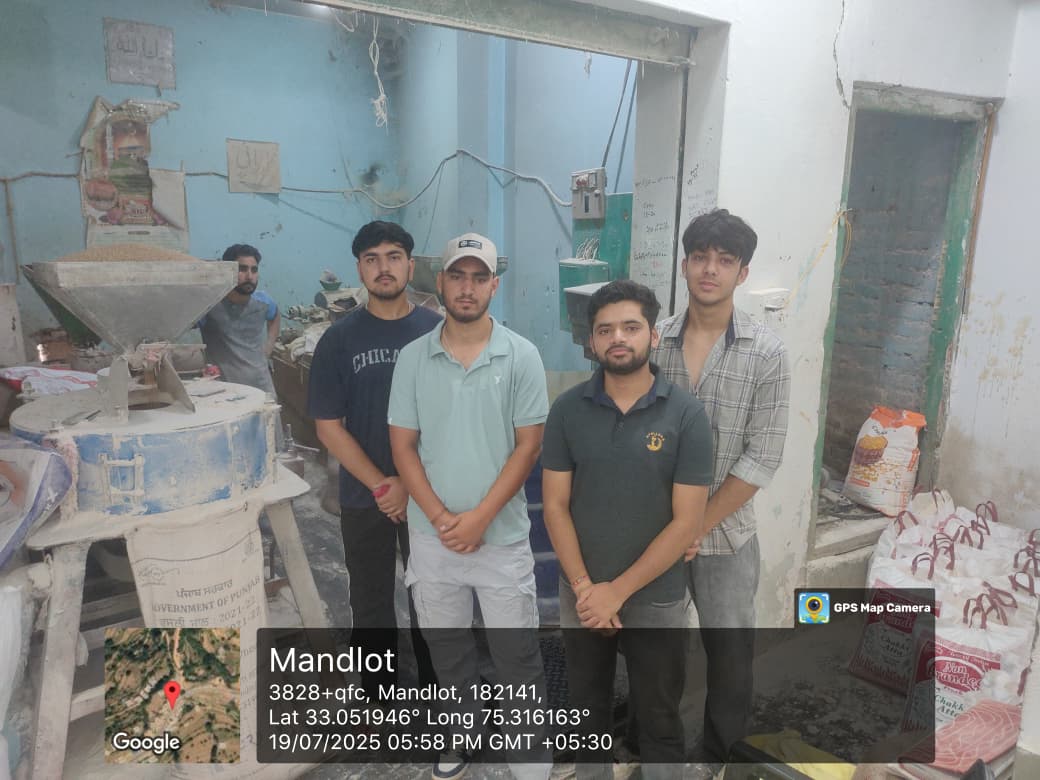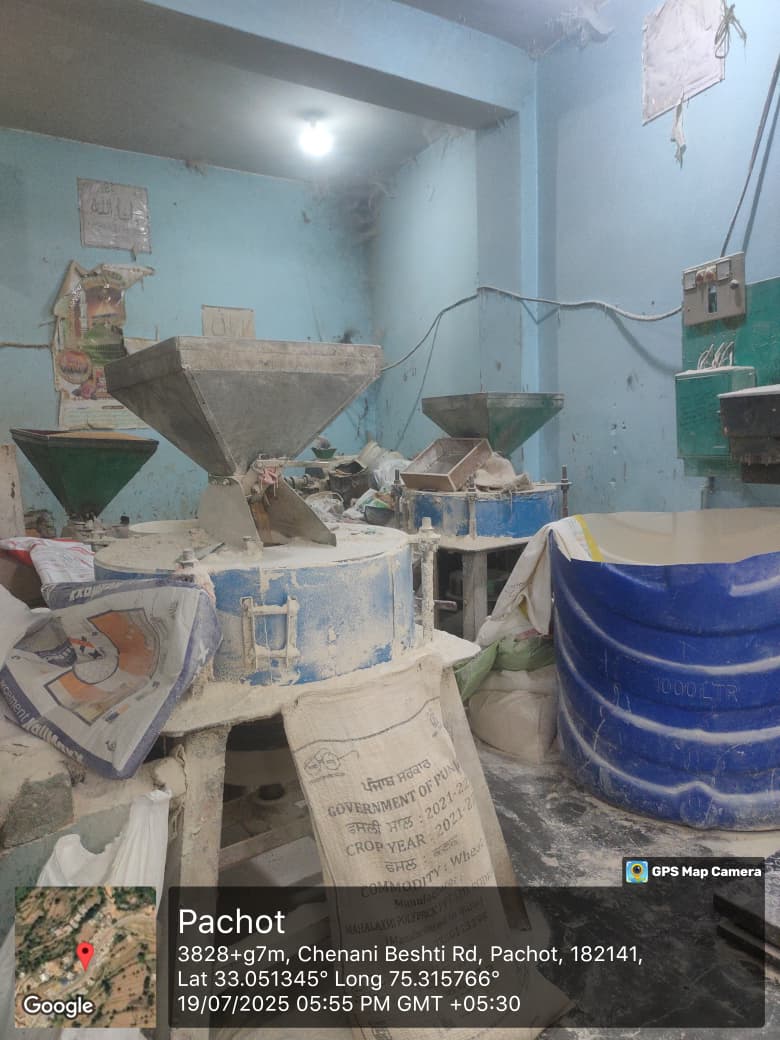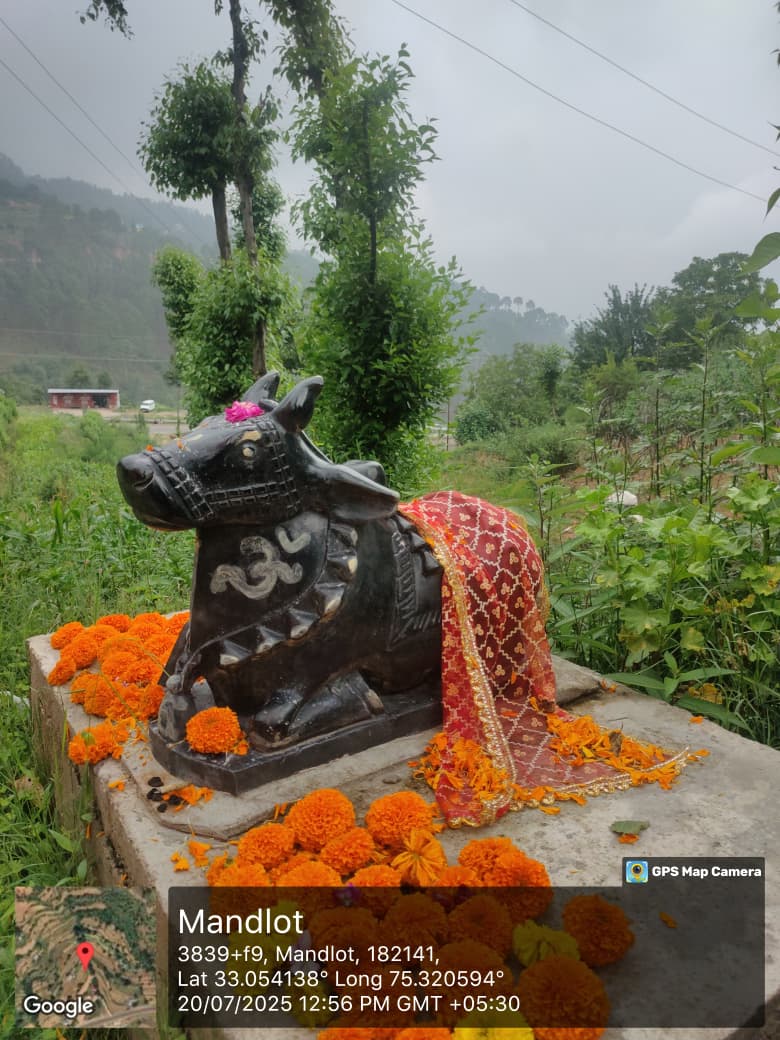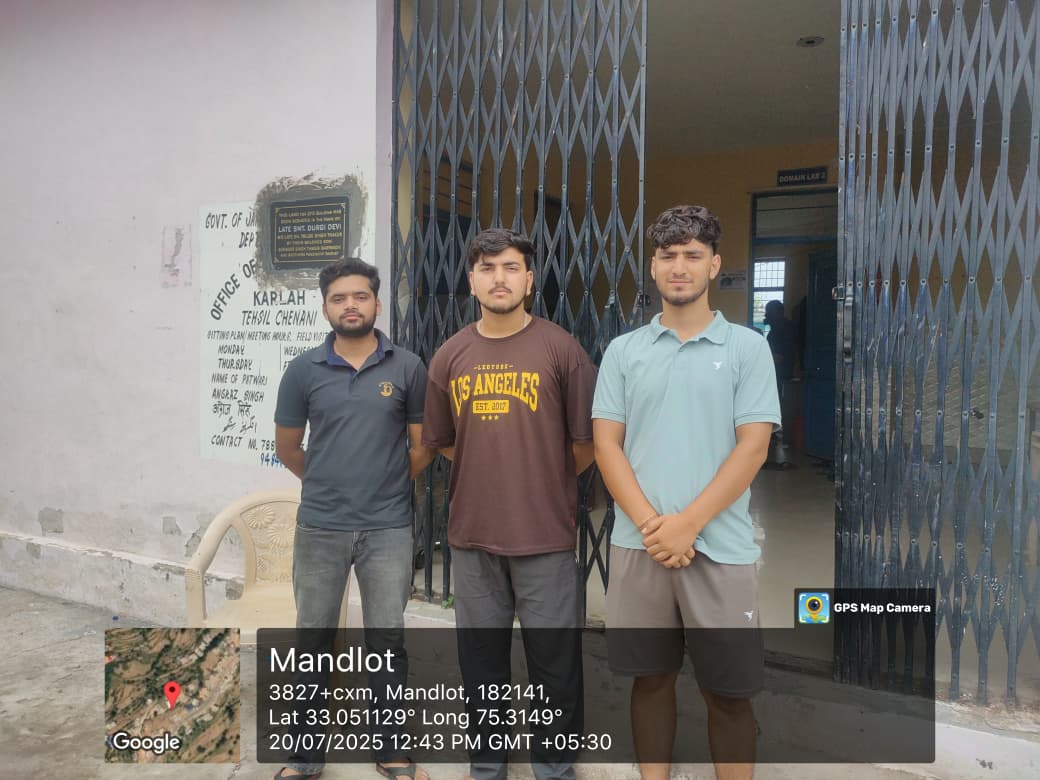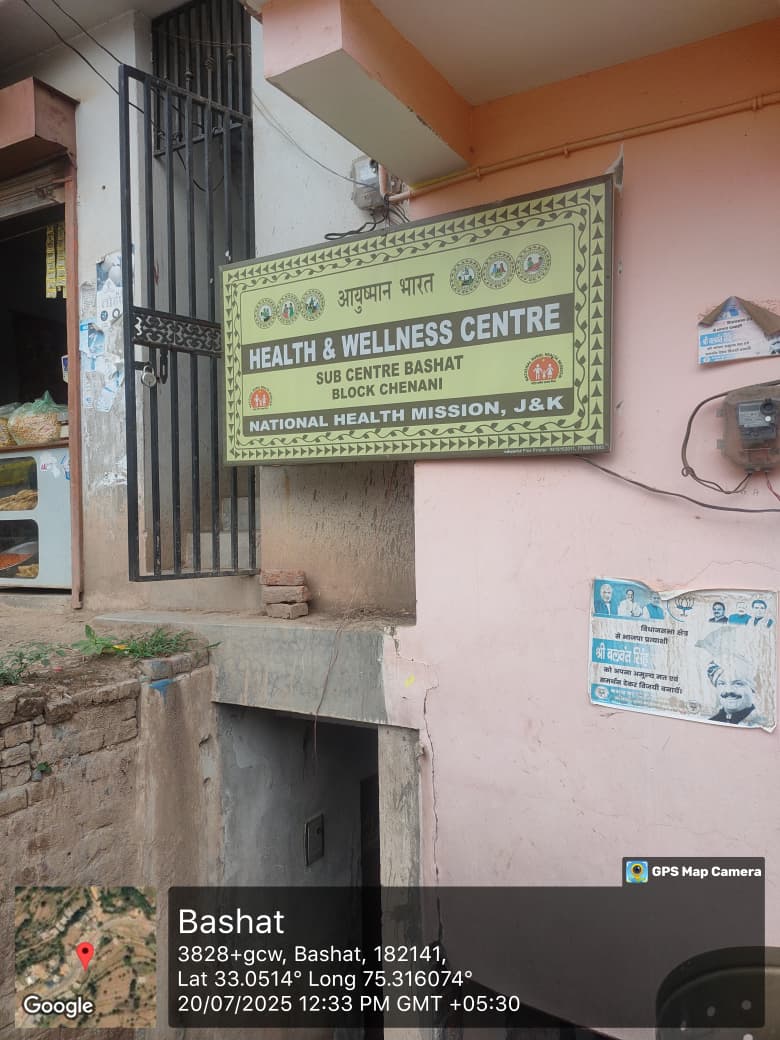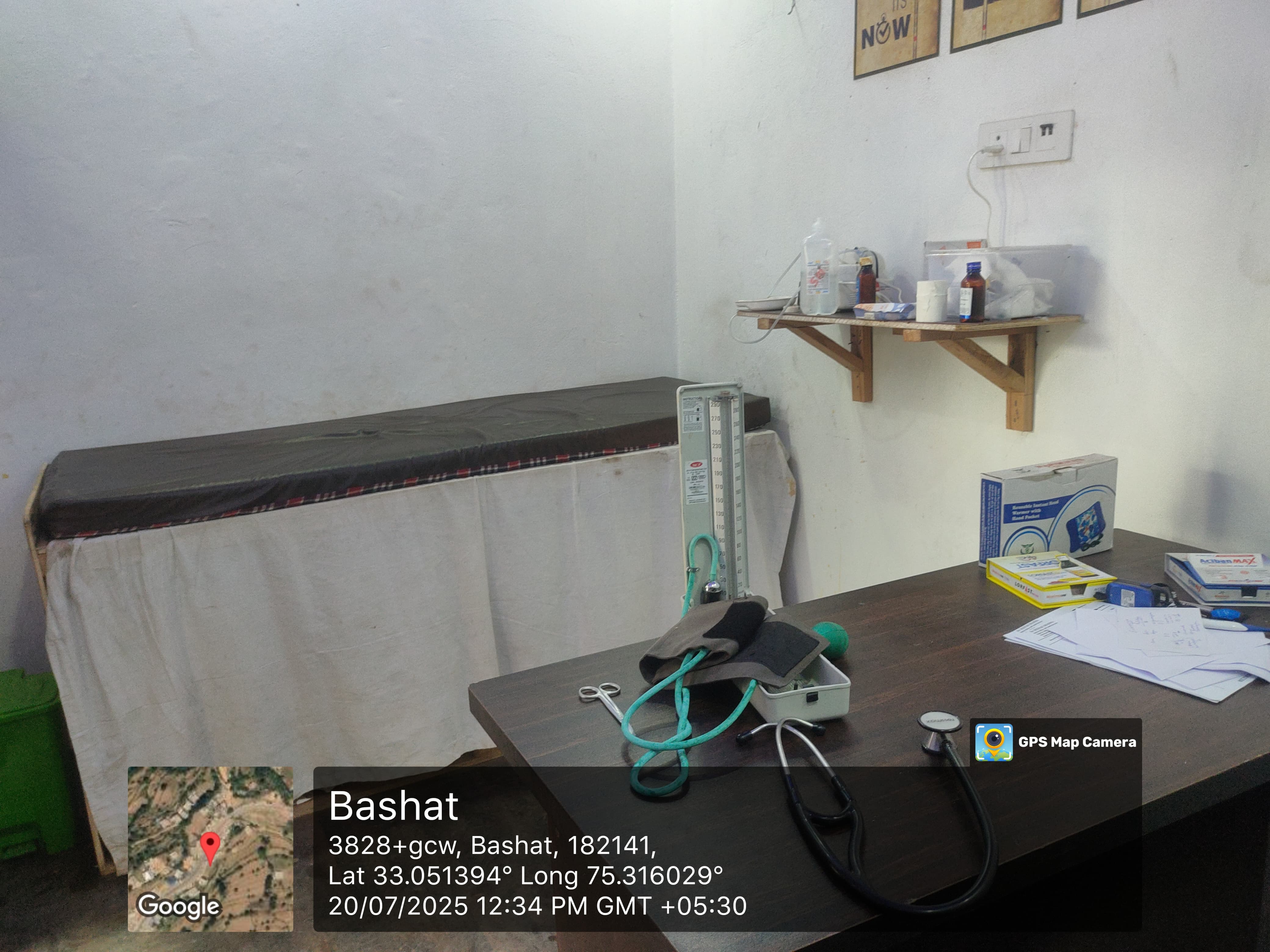Description
Introduction to Bashat
Bashat, a significant village located in the Chenani tehsil of Udhampur, Jammu & Kashmir, serves as a crucial agricultural lifeline for its surrounding communities. While traditionally known for its scenic beauty, its primary importance lies in its role as a key producer and supplier of essential food items, particularly fresh vegetables and wheat flour.
Population and Urbanization
Based on the latest official data from the Census of India 2011, the village of Bashat in Chenani tehsil, Udhampur district, has a population of 1,354 residents.Bashat is classified as a completely rural village and does not exhibit the characteristics required for urban classification .
Language spoken
Hindi and Dogri is most spoken language in Bashat
Cultural Heritage
The culture of Bashat village is a mix of old Dogra traditions and a modern spirit of working together.
Old Traditions: Bashat was once part of a kingdom ruled by the Chandel kings. Because of this history, the people follow the proud traditions of the Dogra community of the Jammu region. This can be seen in their language, customs, and stories.
Festivals and Fun: People in Bashat celebrate festivals with great joy.
-
Lohri and Baisakhi are major festivals tied to the seasons and farming.
-
Navratri is an important religious festival celebrated with devotion.
-
They enjoy traditional music and dance, like the lively Kud dance, which is performed to thank local gods.
Religion: Religion is important to the villagers. They are deeply connected to nearby ancient temples like Sudhmahadev and Mantalai, which are linked to the stories of Lord Shiva.
Cuisine and Food
The cuisine and food of Bashat village are a rich and flavorful reflection of the broader Dogra culinary heritage of the Jammu region. As a village deeply rooted in agriculture, its food culture is also defined by the fresh, local produce grown in its fertile lands.
Staple Foods and Traditional Dishes
The foundation of the daily diet in Bashat consists of grains and pulses grown in the surrounding fields.
-
Grains: Maize (Makki) and Wheat (Kanak) are the primary staples, used to make flatbreads (rotis). Rice is also a significant part of meals, especially during celebrations.
-
Pulses and Legumes: Lentils and beans are crucial for protein. The undisputed king is the local variety of kidney beans, used to make the famous Rajmash.
-
Vegetables: A variety of seasonal vegetables, including pumpkins, gourds, potatoes, and leafy greens, form a major part of the everyday diet.
-
Dairy: Ghee (clarified butter) is the preferred cooking medium, lending a rich flavor to many dishes. Curd (yogurt) is used extensively, both as a side dish and as a base for many gravies , kalari cheese a dense mossarella like local cheese . .
Signature Dishes of the Region
While visiting Bashat or the surrounding Chenani area, one can expect to find classic Dogra preparations:
-
Rajmash Chawal: The most iconic dish of the Jammu region. The locally grown, smaller, and more flavorful kidney beans are slow-cooked in a spicy tomato-based gravy and served with steamed rice.
-
Ambal: A signature sweet and sour dish made from pumpkin, tamarind, and jaggery. It has a unique tangy and sweet taste and is a staple at feasts and celebrations.
-
Maa da Madhra: A creamy and tangy dish made from black lentils (urad dal) cooked in a yogurt-based gravy with a blend of aromatic spices.
-
Kalari Cheese: A dense, mozzarella-like local cheese that is often pan-fried until crisp and golden brown on the outside and soft and gooey on the inside. It is a popular snack.
-
Auriya: A simple yet flavorful potato-based dish prepared with curd and mustard, giving it a distinct pungent taste.
-
Kheer: A traditional rice pudding, often prepared during festivals and special occasions, flavored with cardamom, saffron, and nuts.
Local restaurants/eateries
A local restaurant where Kalari Kulcha and Nutri Kulcha are famous among locals .
Attractions and Tourism
While Bashat itself is a scenic but primarily agricultural village, it is strategically located near some of Northern Jammu's most significant religious and natural tourist destinations. The area serves as a gateway to revered pilgrimage sites and popular Himalayan hill stations, offering a diverse range of attractions for visitors.
Major Religious and Pilgrimage Sites
The region around Bashat is steeped in spirituality, attracting pilgrims from all over the country.
-
Sudhmahadev and Mantalai: Located just a short drive from Chenani, these sites are profoundly linked to the lore of Lord Shiva and Goddess Parvati.
-
Sudhmahadev Temple: An ancient and highly revered temple, it houses a natural black marble lingam, the trident (trishul) of Lord Shiva, and is believed to be the site where he married Parvati. The temple comes alive during the Sudhmahadev Mela, a three-day festival held in June, attracting thousands of devotees.
-
Mantalai Temple: Situated a few kilometers from Sudhmahadev, this area is believed to be the official wedding venue of Lord Shiva and Parvati. The Aparneshwar Temple here is a major draw for pilgrims.
-
-
Gauri Kund: A sacred spring located near Sudhmahadev, where it is believed Goddess Parvati used to bathe before her daily prayers. It is a common stop for pilgrims visiting the main te
-
Community of Bashat
The community and lifestyle of Bashat are a heartfelt reflection of rural life in the Jammu region, deeply rooted in Dogra traditions, the rhythms of agriculture, and a strong, collaborative social structure. Life here is characterized by close-knit relationships, a deep connection to the land, and a powerful sense of community identity.
A Community Centered on Agriculture
The daily life in Bashat revolves around the seasons and agricultural activities.
-
Farming as a Way of Life: The majority of families are engaged in farming, cultivating wheat, maize, and seasonal vegetables. The village is particularly known for its apricot orchards. The lifestyle is hardworking and disciplined, with days starting early and dictated by the needs of the fields and livestock.
-
Seasonal Rhythms: The pace of life changes with the seasons. Summers are intensive periods of planting and cultivation, while the harvest season brings the entire community together. Winters, though colder, are a time for social gatherings, weddings, and celebrating festivals like Lohri.
The Social Fabric: Close-Knit and Collaborative
The social structure in Bashat is traditional, with a strong emphasis on family and community interdependence.
-
Strong Family Bonds: The family is the central unit of social life. Respect for elders and collective decision-making are core values.
-
Community Cohesion: Villagers maintain strong bonds with their neighbours. It is common for the community to come together to help one another during significant life events like marriages, births, or during the demanding harvest season. This spirit of mutual support is a cornerstone of the village lifestyle.
-
Local Governance: The village is governed at the local level by the Panchayati Raj system. The Halqa Panchayat serves as the primary administrative body, resolving local issues and implementing development projects, ensuring the community has a voice in its own governance.
The Modern Role of Women: A Story of Empowerment
A defining feature of Bashat's modern lifestyle is the empowered and central role of women in the community's economy.
-
The Green Himalaya Self Help Group: Bashat is famous for this highly successful women-led cooperative. These women have transformed their traditional skills of pickle and jam-making into a thriving business.
-
Economic and Social Impact: This initiative has not only provided financial independence for many families but has also elevated the status of women within the community. They are not just homemakers but are celebrated as entrepreneurs and key economic contributors, shaping a progressive and inspiring aspect of the village's lifestyle.
Cultural and Religious Life
The cultural and religious practices are deeply interwoven with daily life.
-
Festivals and Faith: The community celebrates traditional Dogra festivals with enthusiasm. The village's proximity to major pilgrimage sites like Sudhmahadev and Mantalai means that faith and religious observances are an integral part of the local culture and lifestyle.
-
Shared Celebrations: Festivals and local fairs are important social events that strengthen community ties, providing opportunities for families and neighbours to celebrate and connect.
Primary and Secondary Education in Bashat
The primary educational institution located directly within the village is the Government High School (GHS), Bashat.
-
Role of GHS Bashat: This school is the cornerstone of education for the village's children and those from nearby hamlets. It caters to students from primary classes up to the 10th grade, providing essential secondary education. As a government-run institution, it plays a vital role in ensuring access to education for the local community.
For schooling beyond the 10th grade (Higher Secondary, i.e., 11th and 12th grades), students from Bashat typically enroll in larger government higher secondary schools located in the tehsil headquarters of Chenani or the district headquarters of Udhampur.
Higher Education and Further Studies
For post-secondary education, residents of Bashat have access to the colleges and institutes located in the town of chenani. These institutions offer a range of undergraduate .
The most prominent institution for higher learning in the district is the Government Degree College (GDC), Chenani . This college provides Bachelor's degrees in various streams, including Arts, Science, and Commerce, serving as the primary destination for students from across the tehsil pursuing higher education.Common occupation
Common occupation
-
-
1. Farming (Agriculture and Horticulture)
This is the primary occupation and the backbone of the village economy.
-
Cereal and Vegetable Cultivation: A majority of the population is engaged in farming staple crops like wheat and maize, along with various seasonal vegetables which are sold in local markets.
-
Horticulture (Fruit Farming): Bashat is particularly noted for its successful cultivation of high-quality apricots. This has become a significant source of income for many farming families.
2. Agri-preneurship and Food Processing
A significant and growing occupation, especially for women, is the processing of locally grown produce.
-
Value-Added Products: The women of the "Green Himalaya Self Help Group" are a prime example. They are engaged in the production and sale of jams, pickles, jellies, sauces, and dehydrated fruits and vegetables. This has turned a traditional domestic skill into a viable and respected commercial enterprise.
3. Animal Husbandry
Livestock rearing is a common supplementary occupation for many farming households. This includes raising cattle, goats, and poultry for milk, meat, and eggs, both for personal consumption and for sale in local markets.
4. Government Service
A number of residents are employed in government jobs. This includes positions such as teachers in the local school, administrative roles in the Panchayati Raj system, and other government departments in the wider Chenani tehsil or Udhampur district.
5. Small Business and Local Services
Within the village and the immediate surrounding area, there are a few small-scale businesses and service providers. This can include:
-
Small retail shops (kirana stores) selling daily necessities.
-
Local transportation services.
-
Artisans or skilled laborers.
-
available healthcare facility
Available healthcare facility
-
-
1. At the Village Level (Basic and Immediate Care)
Within Bashat and its immediate vicinity, healthcare is primarily focused on basic health and wellness services. This is typically delivered through:
-
ASHA (Accredited Social Health Activist) Workers: These community health workers are the first point of contact for the residents. They provide basic medical advice, maternal and child health services, immunization information, and help connect villagers to the formal healthcare system.
-
Health and Wellness Centre (HWC) / Sub-Centre: The government's focus is on establishing HWCs to provide preventive and primary care. Bashat would be covered by a local Sub-Centre, which offers services like basic check-ups, immunizations, and treatment for common illnesses.
For any treatment beyond this initial level, residents travel to the nearby town of Chenani.
2. At the Tehsil Level (Primary Medical Care)
The administrative town of Chenani serves as the primary hub for medical care for Bashat and surrounding villages. The main facility here is the:
-
Primary Health Centre (PHC) or Community Health Centre (CHC), Chenani: This is a larger facility staffed with doctors, nurses, and paramedics. It is equipped to handle a wider range of medical issues, including outpatient (OPD) services, emergency care, maternity services, and minor surgical procedures. It acts as the first major referral point for patients from the village.
3. At the District Level (Advanced and Specialized Care)
For more serious medical conditions, specialized treatment, and hospitalization, the residents of Bashat rely on the healthcare facilities in the district headquarters of Udhampur. The main hospital is:
-
District Hospital Udhampur: This is the principal government-run hospital for the entire district. It has multiple departments, including surgery, medicine, paediatrics, and gynaecology, along with advanced diagnostic facilities like X-rays and labs. It handles major emergencies and serves as the final referral destination for complex cases from rural areas like Bashat.
-
-
-
Environment and Nature
-
Geography and Landscape
Bashat is nestled in the Shivalik range of the Himalayas within the Chenani tehsil of Udhampur. The terrain is characterized by rolling hills, gentle slopes, and terraced fields carved out for cultivation. Its location provides picturesque views of the surrounding mountains and valleys, making it a naturally scenic area. The village is situated in the catchment area of the Tawi River, a major river in the region, which ensures the land is fertile and well-suited for agriculture.
Climate
The village experiences a temperate climate typical of the lower Himalayan region.
-
Summers are pleasant and mild, making it an ideal season for farming and outdoor activities.
-
Winters are cold, with temperatures often dropping significantly, though heavy, persistent snowfall in the village itself is less common than in higher-altitude areas like Patnitop.
-
The monsoon season brings essential rainfall that replenishes water sources and is crucial for the region's crops.
-
-
Agricultural Environment
The natural environment is the foundation of Bashat's agricultural economy. The fertile soil and favorable climate allow for the successful cultivation of:
-
Staple crops like wheat and maize.
-
A wide variety of seasonal vegetables.
-
High-quality apricots, for which the area is well-known.
This strong connection to the land means that the local lifestyle is inherently tied to the natural rhythms of the seasons, from planting to harvest.
-
-
-
Popular Sports
-
1. Cricket
Like in the rest of India, cricket is a passion for the youth in Bashat. It is the most played and followed sport by a significant margin.
-
Accessibility: The game's simplicity is key. It can be played in any open space, from terraced fields to the school ground, using makeshift wickets like stones or backpacks.
-
Community Event: A game of cricket is a major social activity, bringing young people together. Local, informal tournaments are common and are a significant part of the village's social life.
2. Volleyball
Volleyball is a very close second and is extremely popular in the hilly and rural areas of Jammu & Kashmir.
-
Space-Efficient: It requires much less space than a cricket or football field, making it perfectly suited for the hilly terrain of a village like Bashat.
-
Team Spirit: As a fast-paced team sport, it fosters a strong sense of community and teamwork. It is a common sight to see a volleyball net set up in the village's school ground or a community space, with games being played enthusiastically in the evenings.
-
Photos
Location Map
Contact Information
| Address |
Chenani 182141 |
| Phone Number |
9149995956 |

